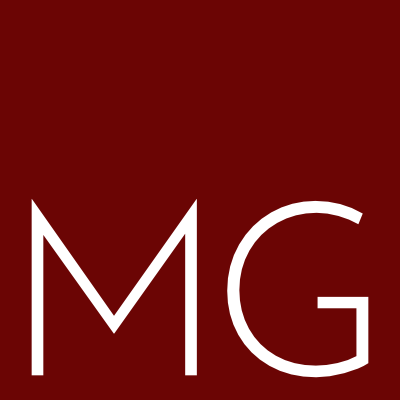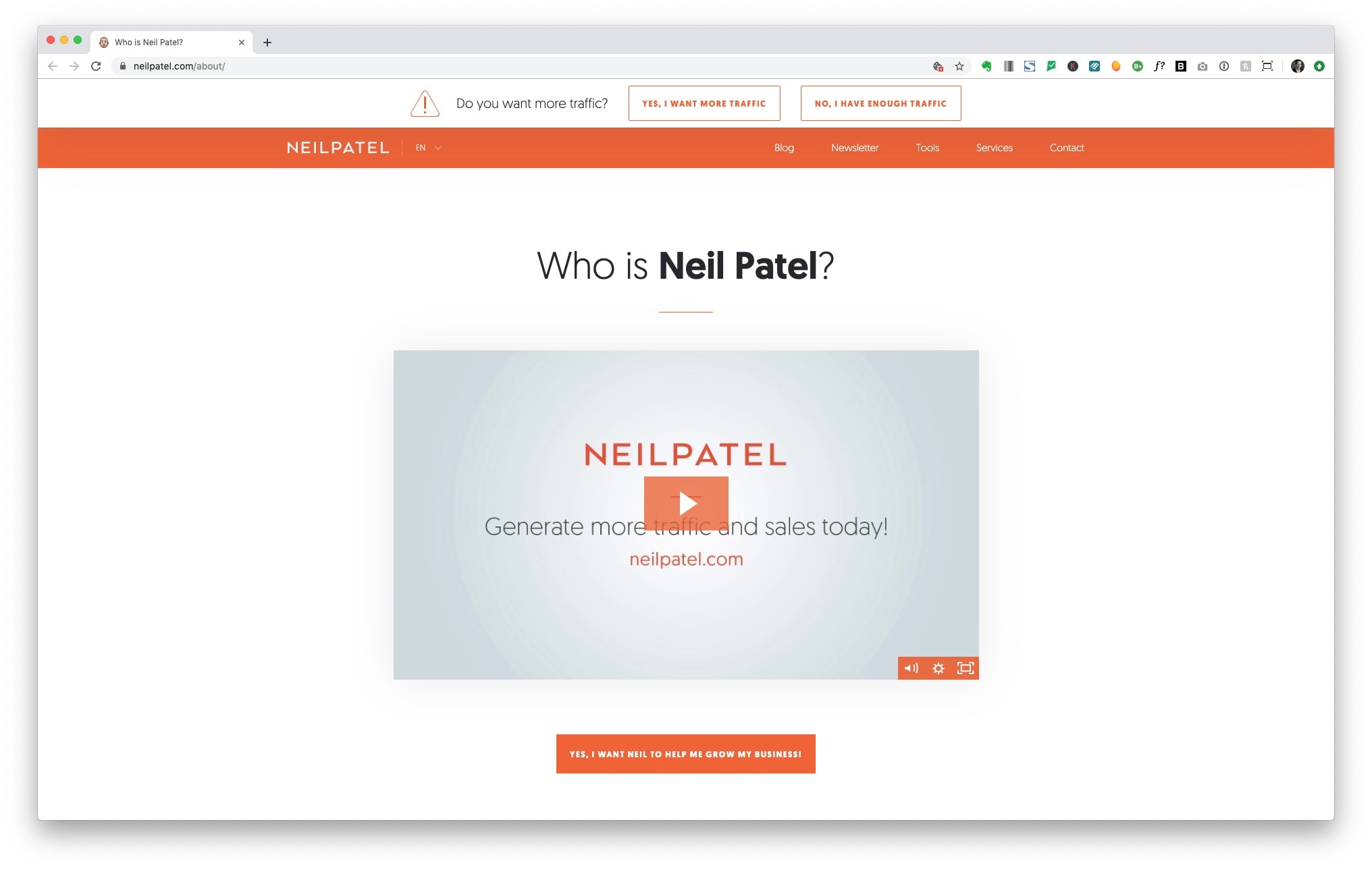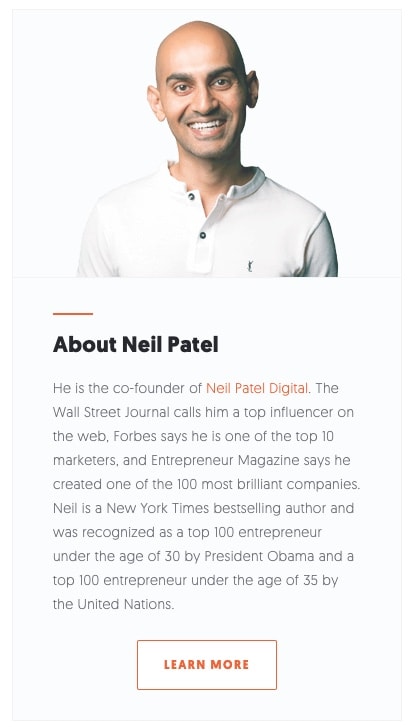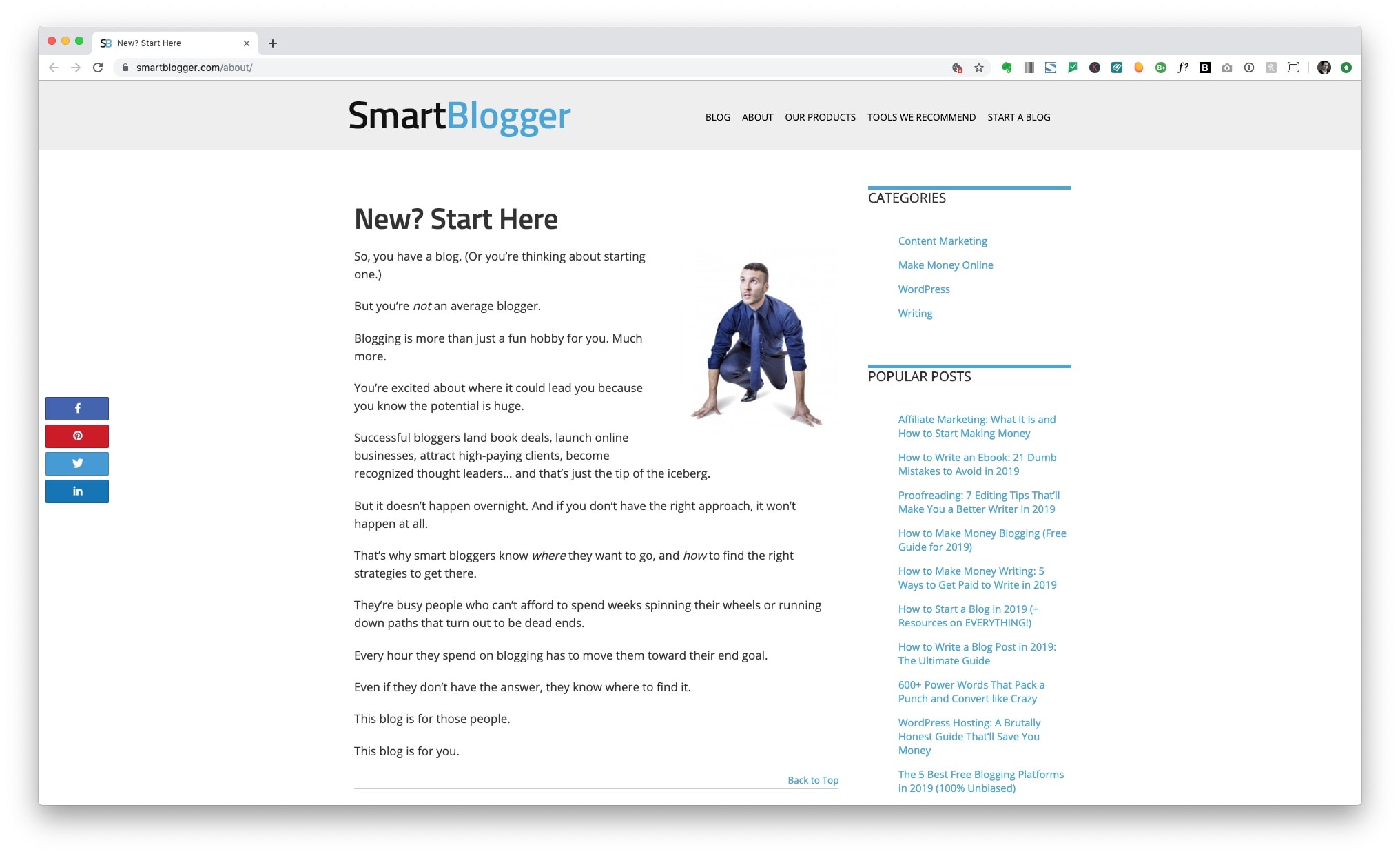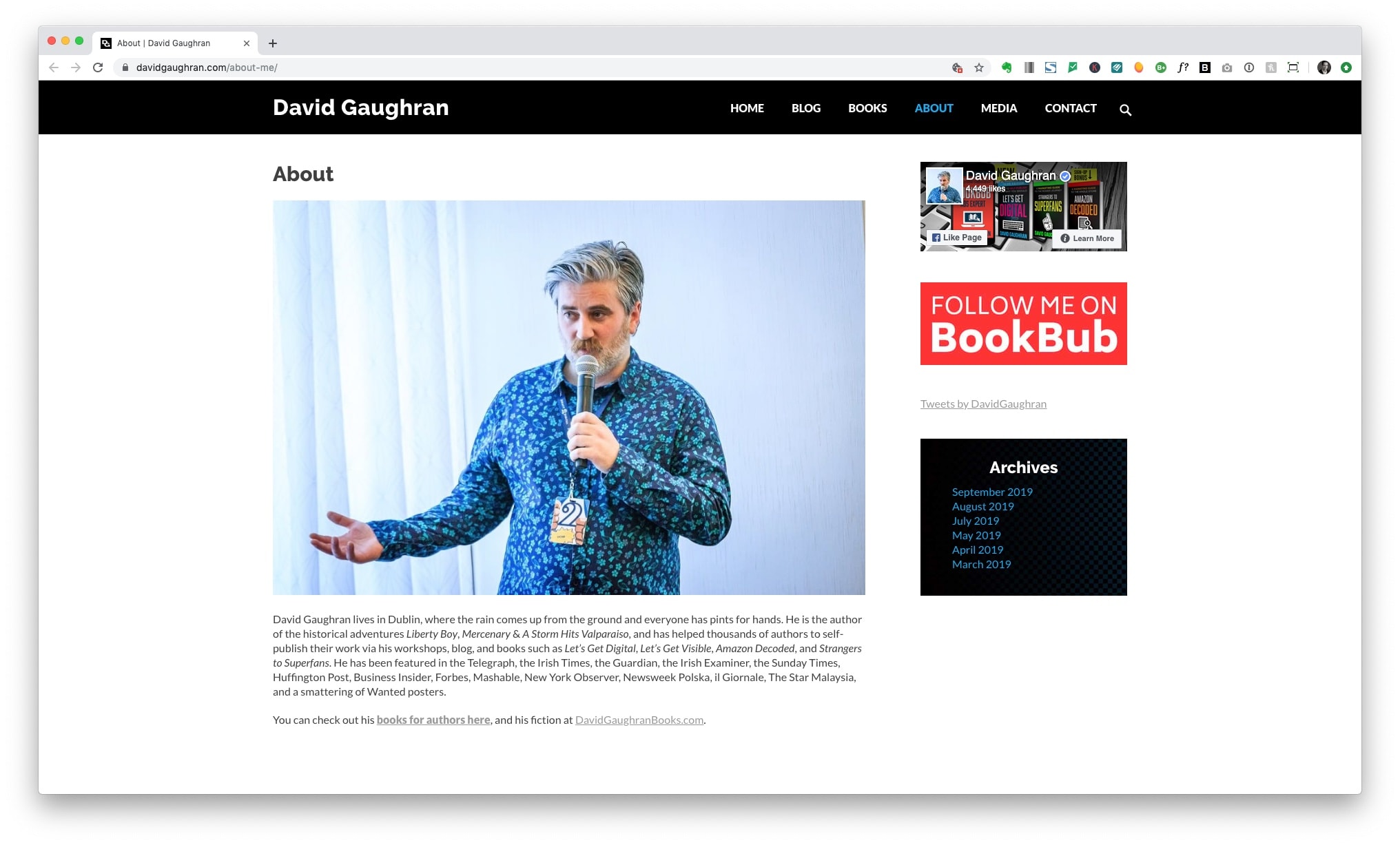How to Write Your About Page: Examples from 12 Top Marketers
Summary: To write an About page that gets your website visitors excited about working with you, you’ll need to connect with your ideal customer and build credibility. This article will show you what 12 top marketers do on their About pages and then give you practical suggestions for writing your own About page.
Your prospective customer—let’s call her Betty—found you on Google.
Betty’s browsed through your site. She’s looked over your offerings and finds they match her needs. She’s on board with your pricing. Then she flips over to your About page to see who you are and whether you’ll be a good fit for each other.
And she finds…
…well, that’s the question—isn’t it?
What details should your About page include?
Should it be about you or your customer?
What point of view should you use: first person (“I help my clients…”) or third person (“Jane helps her clients…”)?
Your About page is an essential credibility-boosting part of your site. Your customer needs to know, like, and trust you before she’ll click your “buy now” or “book me” button or whatever your call-to-action button happens to be.
Your Home page opened the door and invited her into a relationship; your About page can help her cross the threshold.
So what makes a good About page?
Start with Your Ideal Client
When the right visitors show up on your About page, you want them to say, “Hey, this is the person who can solve my problem—it’s like they’re reading my mind.”
So your first job is to write with your ideal customer in mind.
Who is your customer—specifically? Paint a picture of your website visitors by answering some basic questions:
Where do they live?
What’s their age?
How much do they earn?
Male or female?
What do they care about?
How do they spend their money?
What are they afraid of?
What do they hope to change about their lives if they buy your thing?
The better you can answer these questions, the better you can tailor your About page to your visitors’ needs.
Connection and Credibility
Your About page has two important tasks: connection and credibility.
When you create an emotional connection with your site visitors, you make it easier for them to say “yes” to your call to action.
How do you connect with your audience?
Connection: The Liking Principle
In his best-selling book Influence: Science and Practice, social psychologist Robert Cialdini highlights the liking principle.
We like people who are similar to us, especially in appearance or background.
Do you have a story that took you from struggle to success that your audience might share in common? Consider including your story in your About page.
Physical attractiveness is another component of the liking principle. You can strengthen connection with your visitors with a friendly, professional photo of yourself.
And it might go without saying, but an inviting, beautiful, easy-to-navigate website also contribute to liking.
Credibility: The Authority and Social Proof Principles
Besides building a connection with your audience, your About page also needs to show you can “deliver the goods.”
Cialdini’s authority and social proof principles can help you here.
You can play the authority card by citing the credentials and experiences that qualify you as an expert in your field: titles, certifications, education/training, and work you’ve done for clients. Rather than telling visitors you’re an expert at your thing, you show them with your earned credentials and examples of your work.
A portfolio of case studies, though it might not fit on your About page, also builds credibility.
If someone is Googling for a solution to a problem, it’s a sign they’re navigating unfamiliar territory. They haven’t been down this path and they don’t know what to do. When we don’t know what to do, we often take our cues from others. Social proof helps your visitor decide to choose you.
Show quotes or testimonials from satisfied customers.
Include names or logos from businesses you’ve served.
Help your visitors say “yes” to you by showing how you’ve already solved their problems for your past and current clients.
What Do Top Marketers Say on Their About Pages?
You’ll find lots of advice on writing your About page if you Google a bit. But you can also learn by studying some great About page examples.
For inspiration, we’ll study the pages of top marketers and copywriters. These are folks who make a living with their words—they should know what to do.
So let’s take a look at the About pages of twelve top marketers to see what we can learn about writing yours. Our list includes some names you might know and some you probably don’t—but their pages will help us discover what goes into a good About page.
Ann Handley
Ann Handley is the best-selling author of Everybody Writes (one of my favorite books on writing, incidentally) and the force behind MarketingProfs, a “marketing training and education company with more than 600,000 subscribers.”
Ann’s page opens with a large, friendly photo and third-person copy. She begins with a tried-and-true branding formula:
YOUR NAME is a WHAT YOU DO who THE RESULTS YOU BRING
In her case, Ann’s headline tells us she’s a trusted author and reputable marketer who “inspires and empowers” her audience to create emotional marketing that connects. Work your way down the page and you’ll see Ann’s achievements and credentials back up her claim: she’s an innovative marketer and she’s written for several big-name companies (Entrepreneur magazine, NPR, The Wall Street Journal). These help establish her as an authority in her field.
Attention-grabbing graphics with quotes from conference attendees sit to the right of the text. If you need a speaker for your marketing event, these testimonials show Ann delivers.
A few personal details round out her profile. We tend to like people who are like us (that’s Cialdini’s liking principle), and these details help her make connections with her audience.
Altogether the page is visually appealing—clean with lots of white space—and conveys both professionalism and approachability.
Joe Pulizzi
You’ll find Joe Pulizzi’s name frequently mentioned in content marketing circles.
Joe’s headline tells you he creates content and builds businesses. He’s written four books, scores of articles, and co-hosts a podcast with over 200 episodes. He’s also founded three companies, most notable of which is Content Marketing Institute, a leading content marketing authority.
Joe’s page pushes the social proof and “show, don’t tell” buttons. The podcast has “millions of downloads from over 150 countries” and his newsletter goes to thousands of subscribers. Including specific numbers increases the level of trustworthiness.
Joe’s page is also written in third person and features clean design, a friendly photo, and generous use of white space. The content is brief: just two short paragraphs. Included are logos from high-profile businesses and events Joe’s been associated with.
https://www.joepulizzi.com/about/
Seth Godin
Seth Godin is likely the most recognizable name on this list.
His blog, books, and speaking events are wildly popular among business/marketing folk. And for good reason: with “30 years of projects” behind him, Seth Godin has truckloads of insight to offer.
Seth’s content is concise: third person, mentions best-selling books and companies he’s founded, and awards he’s received. Like the writing in his blog posts and books, the tone is conversational. In a world of pushy high-pressure sales tactics, Seth’s approach is refreshingly understated.
Worth noting: Seth Godin’s About page is a section on a single scrolling page. For someone as well-known as Seth Godin, maybe you’d expect a little more… dynamic?
But then again, why?
https://www.sethgodin.com/#about
Neil Patel
Neil Patel is a trusted voice in digital marketing, especially when it comes to SEO. His YouTube channel has 450,000 subscribers and his website is crammed with actionable articles, videos, and free tools.
Like the other pages represented here, the design of Neil’s site is clean and uncluttered. That same aesthetic extends to the About page. Unlike the others in this survey, however, Neil has gone “all in” with video on his site—and it’s especially evident on his About page.
In fact, Neil’s About page features just three items: a headline, a call-to-action button, and an “about” video. No text. Well, there’s a comment stream below the CTA button but there’s no descriptive text about Neil’s credentials or qualifications. It’s all in the video. If you land on one of Neil’s blog articles, though, you’ll see a sidebar with a short “about” blurb.
The video is narrated by Neil and begins with the same formula used by Ann Handley (and many others): “My name is Neil Patel and I help companies generate more revenue through digital marketing.” He continues by telling the story of his journey from teenage novice business owner to marketing expert. The video shows scenes of Neil meeting with “clients,” speaking at an event, as well as business logos from clients and publications (Google, GM, FastCompany, Forbes).
Importantly, he highlights the satisfaction of working with and helping small business owners. This helps his ideal clients identify themselves, increasing the likelihood of pursuing a working relationship.
Joanna Wiebe
Joanna Wiebe is the founder of Copyhackers, a training ground for aspiring copywriters and a copywriting service for “tech companies and disruptors.”
Joanna’s About page begins with an audience-oriented promise to “help you write more persuasive, believable and usable copy.” This is a great way to start: your visitor knows immediately if they’re your ideal client and how you can help them.
Below Joanna’s photo are a contact button and a very short synopsis of her story in first person. She also lists some of her work experience and a few personal notes.
Copyhackers is based in Canada yet testimonials from around the world point out the usefulness of Copyhacker’s newsletter and training lessons. These help nudge your visitor from being a browser to a buyer.
https://copyhackers.com/about-copy-hackers/
Jon Morrow
Blogger/copywriter Jon Morrow has a remarkable story. But his About page isn’t about him—he makes sure it’s about you, the visitor.
The first section of copy is all second person, focused on the reader’s aspirations and goals. Jon’s goal is to put you, the reader, in the driver’s seat. If you recognize yourself in the copy, you’re more likely to say “yes” to Jon.
The next section builds SmartBlogger’s credibility via its history, growth, and results.
Lastly, we finally meet the team behind the business, including Jon. The profiles are written in third person, succinctly highlighting their achievements (credibility) and a personal fact or two (connection).
https://smartblogger.com/about/
Bernadette Jiwa
Bernadette Jiwa runs The Story of Telling, a marketing and branding consultancy. It’s not surprising, then, that her About page emphasizes story and casts the reader in the role of the main character.
In the opening section, the copy begins in second person like Jon Morrow’s. It then shifts to first person plural, showing the reader how we’re all in this together—we have common obstacles and concerns.
The next section moves to first person with Bernadette explaining how she can help us—you and me—overcome those obstacles. She explains her qualifications, builds credibility with social proof in a list of companies that follow her ideas (Red Cross, LEGO, Nike, Amazon, more), awards and recognition, and a summary of the kind of work she does for clients.
The page concludes with testimonials and a CTA.
To prevent the About page from becoming excessively long, other pages on the site (Speaking, Portfolio, Case Studies, Testimonials, Books) showcase her expertise and qualifications.
Again, clean design and a professional photo contribute to the site’s visual appeal.
https://thestoryoftelling.com/about/
Joanna Penn
Joanna Penn is a popular author-entrepreneur in self-publishing (AKA indie author) circles. Joanna’s About page includes a very short third-person bio (for speaking gigs or introductions on other media platforms) as well as a longer, more detailed first-person account.
In the long version, Joanna builds her credibility by telling us she’s a best-selling author who’s written over 30 books with more than 500,000 copies sold in nearly 100 countries. She also mentions her speaking credentials and the 3.7 million downloads of her popular podcast. She includes a few personal details as well to connect with readers.
Joanna’s audience is made of aspiring authors so, smartly, she includes a section describing her own journey from newbie self-publisher to best-selling author. Her inspiring story helps readers connect with her while further establishing her as an expert guide through the jungle of independent publishing.
https://www.thecreativepenn.com/about/
John Jantsch
Duct Tape Marketing is the brainchild of John Jantsch. The Duct Tape Marketing brand is built around a systematic approach to small business marketing. It includes a franchise model for marketing consultants, various business services, a popular blog, podcast, and several books by John.
The About Us page gives a concise first-person explanation of the duct tape metaphor and its usefulness from John’s perspective. Page visitors also get a sense for the scope of the organization by reading the roles of the Duct Tape Marketing team members. Each profile includes a photo.
https://ducttapemarketing.com/about/company/
Henneke Duistermaat
Charming and delightful aren’t words most people would use to describe marketing copy.
But those are exactly the words Henneke Duistermaat’s writing evokes on her site Enchanting Marketing.
Click over to Henneke’s About page and you’ll find her identifying you, her ideal reader, and the struggles you face to write persuasive sales content. She walks you through her story, showing you how she overcame her challenges as a non-native English speaker writing for English language sites and eventually turning to training and teaching.
Credentials are showcased in a simple bullet list format supplemented with company logos of publications where her writing has been featured.
A simple drawing of Henrietta, Henneke’s cartoon character alter ego, complements the light-hearted mood on the page.
The site’s design is simple and cozy with friendly photos and an inviting color palette.
If you find all of this charming and delightful, congratulations: Henneke connected with you.
By the way, Henneke has an outstanding little guide to help you write your website copy. I’ll link it below.
https://www.enchantingmarketing.com/about/#henneke
David Gaughran
David Gaughran is another well-known voice in the indie author space. He’s written both fiction and nonfiction and his blog is a popular and insightful watering hole for other independent authors.
David’s About page offers third-person essentials: a photo at a speaking gig, a list of his books in print, and the names of a dozen or so publications where he’s been featured. The page also includes graphic links for quick access to several categories of blog posts (Writing, Publishing, Marketing, etc.), a CTA for his newsletter, and social follow icons.
Pretty much the minimum but maybe that’s enough for his audience.
https://davidgaughran.com/about-me/
Dan Pink
Dan Pink writes about work, often with an unconventional or counterintuitive spin. He’s a thought-provoking author and speaker whose About page includes both short and long versions of his bio, each written in third person.
The short version lists four of his best-selling books with awards and recognition (for example, best book of 2018, translated into 39 languages, sold three million copies).
The long version of Dan’s bio includes a brief description and notable stats about each book. Short paragraphs also list Dan’s credentials and accomplishments: TV show host on National Geographic Channel, TED speaker, former speechwriter for Vice President Al Gore, and more.
Dan’s CTA is a pop-up to subscribe to his newsletter. You’ll also see a photo of Dan, contact info, “buy” links for his books, and social media follow icons.
https://www.danpink.com/about/
Writing Your Own About Page: 16 Practical Tips
What do we see in the About pages of these these marketers?
As Ann Handley says in the introduction to Everybody Writes:
There is no one way to write—just as there in no one way to parent a child or roast a turkey. But there are terrible ways to do all three. And with each, you’ve got to have a basic understanding of the process before you begin.
The same holds true for your website’s About page. The examples here each take a different angle but they all do well.
To wrap up, here are 16 practical takeaways and tips you can use to write your own About page.
Your About Page Should…
Work like a mirror to help your ideal clients identify themselves when they visit your page
Help them identify you as their ideal business partner
About Page Options: Voice
Include a simple list of qualifications in third person (a good approach if you have some notoriety)
Put your reader first by discussing her needs in second person
Incorporate a first-person narrative, especially if your audience is on the same path you’ve travelled and now faces similar obstacles you can help them overcome
One Thing You Should Never Do on Your About Page
Don’t prattle on about how you love what you do.
Please.
It sounds like you’re writing a profile for a dating site.
I don’t know why, but this is especially common in the photography industry (a space I’m familiar with) but I’m sure it shows up in other fields, too.
Your customer isn’t showing up to help you live the life you’ve always dreamed about.
Your customer wants to know how you can help her achieve her dreams.
Your customer should be the center of attention, not you.
About Page Do’s
Think of one person in your ideal audience and write to him (or her)
Talk about how what you do will help that person
Focus on your audience’s needs/cares/worries
Write in short paragraphs with good copywriting practices
Use conversational language and tone
Show, don’t tell: let others tell how good you are—use social proof, testimonials, credentials
Invest in a professional photo/headshot
Include your name (it’s surprising how many About pages don’t include a name)
Build connections to your social media profiles
Invite the reader to the next step with a call-to-action
Follow these guidelines and you’re on your way to building credibility and connecting with your website visitors—and turning them from browsers into buyers.
Your turn: Whose About page inspired your own? What approaches have you found helpful?
Resources mentioned in this article
Robert Cialdini, Influence: Science and Practice (Amazon link)
Ann Handley, Everybody Writes (Amazon link)
Henneke Duistermaat, How to Write Seductive Web Copy (Amazon link)
Ready to get your own small business website? Just want to talk about it? Join me for a free consultation to get started.
